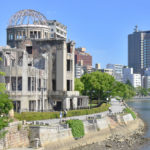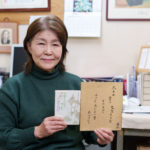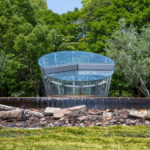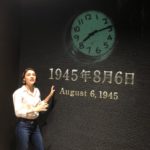Roses in Hiroshima Peace Memorial Park Vol.2

Are you familiar with Jan Letzel? Speaking of the person who designed the Hiroshima Prefectural Industrial Promotion Hall (Atomic Bomb Dome), he might come to mind for some people.
In this article, we would like to introduce the relationship between Hiroshima and Jan Letzel himself, his homeland Czech Republic, and the roses commemorating the exchange.
Hiroshima Prefectural Industrial Promotion Hall, which was a cutting-edge design

Jan Letzel was born in the present Czech Republic in 1880. After studying modern architecture at an Art Academy in Praha, he got a job at an architectural firm in Yokohama and came to Japan in 1907. He then designed a number of buildings, including the Oriental Hotel in Kobe (destroyed by air raid) and the Matsushima Park Hotel in Miyagi Prefecture (destroyed by fire), and in 1915 he completed the Hiroshima Prefectural Industrial Promotion Hall. Its supple rounded exterior and the decoration of the window frame seemed to be a sharp design at that time, and it quickly gained popularity and became a famous place in Hiroshima.
Jan Letzel returned to Japan in 1915 and died of illness ten years later.
The Hiroshima Prefectural Industrial Promotion Hall, which he left, remains today as a reminder of the damage caused by the atomic bombing.

Collection and Courtesy of Hiroshima Municipal Archives
Overcoming the Disasters of War

In 1978, the chairperson of the federal parliament of Czechoslovakia, Alois Bindra visited Hiroshima by reason of a connection with the late Jan Letzel.
At that time, he and the mayor of Hiroshima, ARAKI Takeshi, agreed to exchange rose seedlings for friendship and peace.
In 1979, the City of Hiroshima donated eighteen rose seedlings of Japanese origin to the Lidice Rose Garden in the suburbs of Praha. During World War II, the village of Lidice was occupied by Nazi Germany, and nearly 500 villagers were massacred due to false accusations of attacking German dignitaries, and the village itself was erased from the map.
After the war, at the urging of British peace activists, a rose garden was built on the site of the village as a symbol of peace, and the roses donated by Hiroshima were planted there.
In return, when then Prime Minister Strougal visited Japan in 1979, ninety-five rose seedlings that he had brought with him were delivered to Hiroshima. There were ten species of rose seedlings, including Tahiti and Moravia. The following year, forty of them were planted near the Memorial Tower to the Mobilized Students in Peace Memorial Park, twenty in the Hiroshima Botanical Garden, and the remaining thirty-five seedlings were divided among four high schools in Hiroshima City.
Today, the roses planted in the flowerbed on the south side of the Atomic Bomb Dome by Jan Letzel are pleasing to the eyes of those walking on the promenade along the Motoyasu River.
Peace Memorial Park
Address: 1-1 Nakajima-cho Naka-ku Hiroshima City (Jan Letzel’s roses pinned on the map)
Tel: +81 (0)82-504-2390
Website:http://hpmmuseum.jp/?lang=eng
Rose in Hiroshima Peace Memorial Park Vol.1
Introducing the Peace Study Project
Reconstruction Support from Overseas
When the atomic bomb was dropped on Hiroshima, various kinds of support were delivered from overseas. This “support from overseas” encouraged the struggling citizens of Hiroshima both physically and spiritually.
Reconstruction Support from Overseas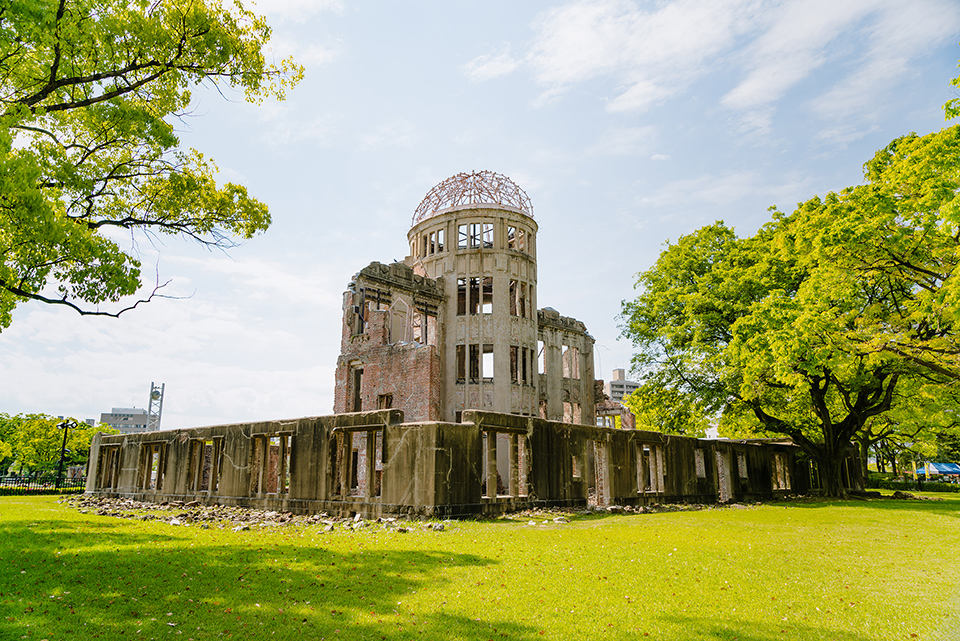
Tags associated with this article



